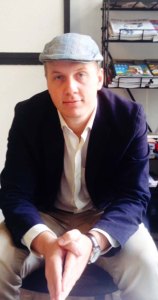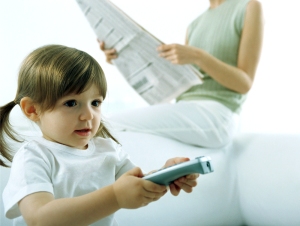So what is a Hackathon? Is it three days of creating and fun combined with sleepless nights? Or just an excuse to go and network with like-minded people? What makes The Port Hackathon at CERN special? Is it because you work on real life issues put forward by international organisations such as the UN and the Red Cross? Well, as a true writer and creator I had to find out! My purpose was sentimental as well – I did an internship at CERN’s Press Office back in the year 2000 and wanted to go back and see for myself how much CERN had changed. And if beautiful Geneva had changed.
Day1 – the one where chaos becomes order
So here we are, gathered in Geneva, Pier14 – the Sunshine Crew – Sujata, Alex, Zdravko, Jose-Luis, Nick, Mukul, Kitty, me (Katja), Hansdieter. Professionals with different backgrounds, we have travelled from different corners of the world – India, Taiwan, Bulgaria, Sweden, Jamaica, Holland, Portugal, Austria/ El Salvador. All of us gathered now at The Port at the Idea Square of CERN to work on a 3-in-1 device for humanitarian aid using solar energy for three days. We started 6 weeks in advance with teleconferences every Monday evening brainstorming, deciding on the materials we need. Which meant not too much sleep and 1 am calls for some members of the team but the project idea formed and came together – a 3 in 1 device for cooking, purifying water and heating a room for families in Nepal, all of it using pure solar energy.
Why Nepal? Because we talked to Alex Zahnd from RIDS Nepal and he could supply us with all the information we needed of what humanitarian problems to solve there. We also armed ourselves with some world statistics such as that 4 million people in the world die from indoor cooking smoke every year and an average household in Humbla, Nepal, uses 20 – 40 Kg of firewood for cooking, heating and lighting. So we thought that if we could contribute to diminishing the number of deaths with 10-20% and abolish the use of firewood, we would be really happy.
Well gathered at CERN and THE Port we wrote down the inventory we needed, scoured the CERN dumpster for parts, took apart an old air conditioning to use the air tubes for transporting water. The unfortunate part of our story is that all the parts we had ordered from Germany were delivered to CERN but they refused to accept the package. Thus the parcel was sent back to Germany.
The first day involved looking at all the available parts at CERN, cutting and welding, killing a tree to make a xylem filter, designing and re-designing our 3 in 1 device. It did also involve getting to know each other and in which areas we could be most helpful to one another.
After doing some inventory, part of the team went shopping in France with an electric car (we did like the acceleration of the BMW electric cars). So we were standing there explaining in French that we are looking for valves for 8 mm tubes, the 8 mm copper tubes themselves, clams, etc. It was good that Alex knew some French to explain all our needs to the sales assistant. Buying a pressure cooker from MIGROS was the easiest part.
Back at the CERN Idea Square the team continued to work on our prototype until 4 am in the morning. I unfortunately had an upset stomach and turned into bed early. Must have been all that stress and the numerous cups of strong coffee or just a case of a flu. Who knows?
Day 2 – when we fail a little 😦
On Day 2 I was there bright and early only to find out that most of the crew was still sleeping. I decided to help in the kitchen and cook plenty of eggs instead. I love croissants but croissants every day for breakfast is not my idea of healthy living.
When the crew assembled we started with looking into additional parts we needed, working on prototype number two, creating a filter for purification of water from three big plastic bottles, coffee filters, pebbles, charcoal and sand. Alex and Hansdieter went to buy more parts in Geneva, while we worked on the midterm presentation for the Idea Square. All the teams’ midterm presentations went really well. It was amazing to see all the interesting projects the teams were working on and it a good opportunity for participants to ask questions and get useful feedback on their ideas.
After lunch we went to the SRB site, connected our device with the solar panels to test it. Unfortunately the sun was hidden by clouds and even though the water started boiling we could not conduct the steam to the radiators so not able to declare our prototype as a fully functioning one. Some of the problems: the pressure cooker was fully insulated however:
– At a certain point, the pressure cooker pressure release was shut off. At this moment, the water started to flow out of the tube (as expected);
– Pipes were too long – the temperature at the exit was too little;
– Insulation was inexistent – temperatures decreases very fast;
(Do not ask me – plenty of engineering stuff! But I started writing our story on site and designed the logo for the team as featured above. What do you think?)
Back at the Idea Square we reconvened to see what we can improve in the prototype and settled on trying out one with a closed circuit the next day. The evening did include going to the Antimatter lab at CERN for some members, even if it was to just get a look at it from the outside. And no, no black wholes created there.
Brainstorming further we went totally out of the box to come up with applications for our device, which included relief trucks for the Red Cross and extracting oil with the help of steam. To see how a relief truck works part of the team went to visit the CERN Fire & Rescue Brigade.
I went to have a dinner in St.Genis in France with my dear friend Geri, who I had not seen for 15 years. And yes, we had some beer and red wine. CERN and the Idea Square are alcohol free.
Day 3 – when we succeed and hope the project will get picked for investment.
The morning started with breakfast at the Idea Square and then going to the SRB site to test the new and improved prototype. This time it worked, the water was boiling, heat and steam were produced so we declared our prototype fully functioning. We had two people from the Red Cross who came to see our prototype and the solar panels at CERN, so who knows what the future holds! After lunch we worked on our final presentation, making a functioning filter, documenting all our work.
An initial idea existed to help the team from Pier 20 use solar energy for their Baby Incubator and some people from our team talked to them. An exchange of ideas is the main purpose of the Hackathon and team members talked to different participants. And exchange of cultures. I heard two gentlemen from Turkey were distributing baklava one evening, and Mukul from our team treated us with Indian spicy bread especially made by his mum.
I am all for exchange of ideas and went to Campus Biotech in Geneva to hear the final presentations of the teams working there. I found some of the prototypes there really good and quite feasible.
After our final presentations at the Idea Square we spoke to a gentleman working with Disaster Relief Operations, who claimed that if we can reduce the cost of our prototype from 150 dollars per piece to 20 dollars per piece, he would be very interested in buying. Actually, the whole idea was that residents of Humbla, Nepal (or other areas needing it) could assemble a device like ours at a very low cost. So perhaps the continuation of The Sunshine Crew project can be finding a way to reduce the cost of the device and then contacting organisations who might be interested in buying it.
The Sunshine Crew did have some after party of our own having beer from tall pipes in a pub in Geneva. A team member had beer for the first time in his life which was a cause for celebration in itself as well. Suffice to say – it was a lot of work but we had a blast and we are looking forward to next year’s Hackathon! And yes, this Hackathon was totally worth the time and the efforts. And Geneva is as beautiful as I remember it.












